Case Study: Cy-Fair Fire Department Cuts EMS Offload Times by 77%
Texas EMS Agency Slashes Hospital Offload Times For Low-Acuity Patients Down from 45 Minutes to 10.2 Minutes with Innovative Door-to-Lobby Protocol ...
12 min read
 Kinsie Clarkson
:
Nov 11, 2020
Kinsie Clarkson
:
Nov 11, 2020
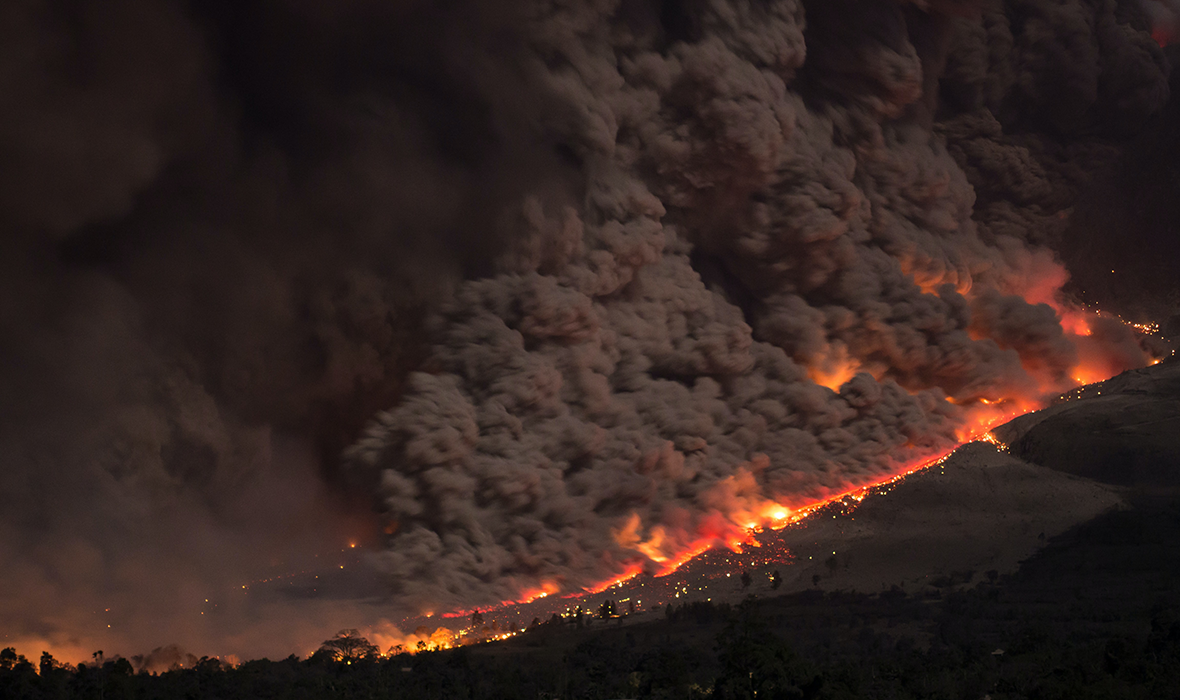
It's been a big year for large-scale emergencies. Hurricanes, floods, wildfires, a pandemic — and responding to all these disaster scenarios involves a great deal of preparation, practice, and planning.
Recently, a panel of industry leaders and experts in EMS and emergency preparedness (including Pulsara's own CMO, Kris Kaull) got together for an exclusive fireside chat-symposium, hosted by HERE Technologies. The group talked about overcoming the obstacles of disaster preparedness and mitigation and how to build a culture of preparedness and cross-agency collaboration. As they discussed disaster mitigation for large scale public safety scenarios, they also touched on some of the latest technology that's helping to improve scenario planning.
Read on for the top 6 takeaways, or watch the full webinar below.
Expert panelists for the discussion included:
Here are our top 6 takeaways from HERE Technologies' webinar on "The Art of Location: Large Scale Disaster Prevention and Mitigation."
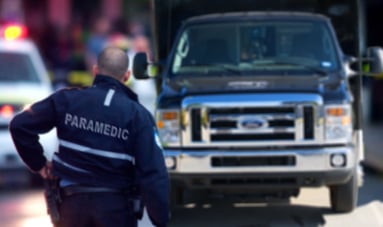 In order to build a culture of preparedness, said Kris, we really have two choices: to be reactive to events that happen, or to be proactive. In order to be proactive, we need to consistently rehearse for the real deal. “We need to plan, we need to practice, and then we can execute the same way every time. If we're doing the basics consistently, then we have the bandwidth to adapt to the changing environment. If you look at a Broadway play, there are so many players. You have actors and singers and dancers and the performers, but you also have lights and sound, and you have the stage crew, and you have costumes, and you have musicians—as we're conducting this entire program it's based on, right? They've planned what they're going to do, they have experience and training on it, they practice it, and so when it comes to the day of the event, it's not something new. They're executing on what they become experts at. We need to take that same concept and apply it to public safety, instead of saying, ‘Let's train quarterly or once a month or maybe only once a year on national disasters or big scale events.’”
In order to build a culture of preparedness, said Kris, we really have two choices: to be reactive to events that happen, or to be proactive. In order to be proactive, we need to consistently rehearse for the real deal. “We need to plan, we need to practice, and then we can execute the same way every time. If we're doing the basics consistently, then we have the bandwidth to adapt to the changing environment. If you look at a Broadway play, there are so many players. You have actors and singers and dancers and the performers, but you also have lights and sound, and you have the stage crew, and you have costumes, and you have musicians—as we're conducting this entire program it's based on, right? They've planned what they're going to do, they have experience and training on it, they practice it, and so when it comes to the day of the event, it's not something new. They're executing on what they become experts at. We need to take that same concept and apply it to public safety, instead of saying, ‘Let's train quarterly or once a month or maybe only once a year on national disasters or big scale events.’”
And if we’re going to be rehearsing consistently, it makes more sense to respond using the same tools and practices that we use every day. “Instead of just training for a disaster once a year, twice a year maybe, we should be using the same tools every single time, and then when a disaster happens, all we're doing is scaling on those tools. Instead of taking a product off the shelf and dusting it off when things are overwhelming us, human nature says, we actually scale back to the tools that we've been doing every day and we focus and connect to that.”
Mike drew attention to the importance of constant access to the necessary tools. “All of us have power to our homes or places of work, depending on where we're sitting from. We’ve all got internet access, and we rely on that to be available for this conversation. We need to have that available to us. The electricity needs to be available to us if I want to turn on my lights, even if I don't turn on my lights for a couple of years. The same kind of thinking is true in disaster planning and scenario planning. You've got to have your infrastructure already there, and then the more comfortable you are already using it, the better things are going to be.”
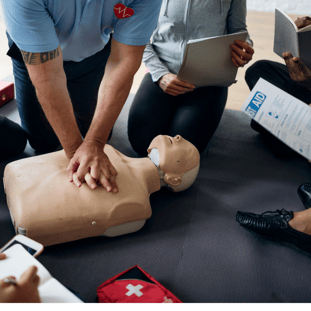
Todd pointed out that as humans, muscle memory can be one of the most effective response mechanisms in disasters. If you can continue to rely on a tool or system that you’re already familiar with, muscle memory will help set you up for a successful response. “In scenario planning, it’s important to keep in mind that we're humans that are responding to these disasters. If we use those steps, techniques, tools, approaches on a daily or weekly basis, they become ingrained into our system, into our way of thinking. When we're actually in a disaster, when our adrenaline is pumping, maybe we're worried about our family at home while we're on duty. All of those things are going on. Then the more things that you don't have to think through to do, you can fall back upon essentially your muscle memory.”
Kris agreed, identifying how, often, the ways we prepare don’t actually help us prepare for the real thing. “We've all taken a CPR class, and you have the quadruple amputee mannequin, and it's static, and you put your fingers up, and then you look at the instructor so the instructor can tell you whether or not they have a pulse, right? But that's not real life. There is no instructor on a real patient."
It’s impossible to adequately prepare for every possible emergency. You could put all your time and resources towards running through every scenario, and still not cover every possibility. With that in mind, Pratik asked: “Should responders make a plan for certain types of incidents, such as floods, power outages, or disease outbreaks? Or, should responders make a plan that should be able to cover a variety of different incident types?”
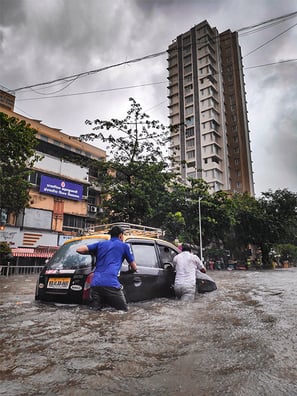 Mike favors a more specific approach. “In my experience, the people who focus on the generic training end up fluffing over a lot of stuff, and not tackling the hard situations. Instead, take a real incident and a real situation that happens somewhere, where you can get the videos and the plans and the after action reports and all that kind of stuff, and just bring that whole scenario into your community. So in the Air Florida plane crash in Washington D.C., in the icy river and people were alive and on the road and all that craziness, bring that to Santa Barbara, and ask, ‘How would we deal with that exact kind of situation here?’ It forces us to think through things that you won't think of if you stay generic.”
Mike favors a more specific approach. “In my experience, the people who focus on the generic training end up fluffing over a lot of stuff, and not tackling the hard situations. Instead, take a real incident and a real situation that happens somewhere, where you can get the videos and the plans and the after action reports and all that kind of stuff, and just bring that whole scenario into your community. So in the Air Florida plane crash in Washington D.C., in the icy river and people were alive and on the road and all that craziness, bring that to Santa Barbara, and ask, ‘How would we deal with that exact kind of situation here?’ It forces us to think through things that you won't think of if you stay generic.”
Todd agreed, but added that common frameworks can help—and that too generic is better than nothing at all. “I think there are some common frameworks for how to think about when bad things happen. Common potential issues, like resources, and people with COVID, PPE, all those kinds of things. I think working through any of them is smart. Being too generic is better than not doing it at all.” The important thing, he said, is to walk through the scenario. “Even like a professional athlete or just a serious athlete, visualizing what happens, walking through this scenario in their head, thinking about all that is really a form of simulation, and then doing that with somebody that you're sitting having pizza with is another form of simulation, and working your way through those things. But there's nothing like learning from everybody else's mistakes. I always say I don't mind making my own mistakes—I just don't want to make the same mistakes everybody else always has.”
While the technology you choose to use is important, and there are plenty of solutions to choose from, ultimately, your success depends on two things: your people and how well they’ve been set up to succeed. Kris explained: “Technology isn't the problem, and yet technology also isn't the solution. It's a tool. We commonly say around the offices at Pulsara that our technology solution, or anybody's technology solution, is about 5% of the equation, and processes, protocols, practice is about 15%, but the other 80% is people.” And often, Kris explained, that dynamic between people and process is where things can break down. “In air medical and aviation safety, we have something called the Swiss Cheese Model. The premise is this: you have a number of slices of Swiss cheese, each of them have their own random holes, and given a certain amount of time, it will inevitably be where 10 slices of Swiss cheese, one of the holes goes all the way through. Ultimately, that's what happens when we have an exposure or risk in aviation crashes. If we look back in history and you look at, what are all the dynamics that happened before that crash, you see that there was mitigating things that happened along this chain in a certain set of sequences that at any time they could have been broken, and it would have protected them.”

That’s why, says Mike, it’s important to put in place those same kinds of systems, checklists, and safeguards to help people succeed. “As I was listening to Kris talk about the Swiss Cheese Model, one of the things that popped up in my mind is a quote from W. Edwards Deming, the founder of quality management in the world as we know it. He said, ‘When you put a person up against a system or process, the system or process will win every time.’ When we're talking about technology and systems and practices and processes, as leaders we have a responsibility to design systems and processes and—Todd says this pretty regularly—that it's easier to do things the right way. It's easier to do things in a way that makes sure nobody walks into a tail rotor. It's easier to do things in a way to make sure that you're not going to run out of oxygen on this particular call. Whatever it happens to be, the systems, practices, and processes, and the technology all line up together to set the people up for success.”
Pratik summed up the question well. “Technology is just going to help you do it better and faster, ultimately. But as the panel is saying, getting there and getting these procedures and questions right is key.”
In emergencies, you’re already dealing with a number of unprecedented factors. Planning for them doesn’t just mean having the resources in place to deal with them; it also means having a plan for what happens when those resources aren’t available.
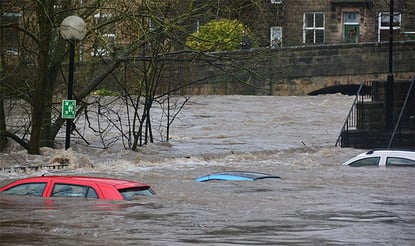 Mike recounted a personal experience about losing a cell tower after a mudslide, leaving people completely unable to call for help. “The value of scenario planning is to think about: What if this basic thing we depend on goes out? And build that in as your practice. What if all of our communication system goes out? What if our system leaders who wrote the disaster plan are in the front car of the train that crashes? How do you think through it from that perspective?”
Mike recounted a personal experience about losing a cell tower after a mudslide, leaving people completely unable to call for help. “The value of scenario planning is to think about: What if this basic thing we depend on goes out? And build that in as your practice. What if all of our communication system goes out? What if our system leaders who wrote the disaster plan are in the front car of the train that crashes? How do you think through it from that perspective?”
Kris agreed. “What happens when something expected didn't happen—that's what we plan for. That should be the cornerstone. When we talk about managing a patient’s airway, we don’t say: ‘Well, what happens? How do I manage this patient's airway?’ Instead, it’s, ‘What if what I was going to do fails? Then what's plan B, what's plan C, what's plan D?’ In your scenario planning, you should add in, ‘I have all these expected resources, but what happens when they don't show up,’ or ‘what happens when I can't actually even communicate with them to let them know I need help?’ That's best to do not in real life, but in that preparedness and planning stage.”
“When scenario planning is not in place, establish it, but more importantly, it starts with asking some essential questions of human function," said Pratik. "What do we do when this happens? What do we do when that happens? Start to document them and catalog them, and then begin to disseminate these throughout your agency, so that you can develop over time a schema on what to do. I think it just starts with asking some of those essential questions.”
Mike shared a story about an incredible emergency response to a bombing in Jerusalem. “In Israel, they train everybody. From their volunteer EMT, explorer, scout level kinds of folks, to their physicians and everybody in between, gets trained to be an incident commander. Everybody in the country who is an emergency responder is an incident commander. Right here in Santa Barbara, if there's a hazardous materials spill on the highway out in front of me, they have to call the HAZMAT team. There's only a handful of people who are trained to work in a level A suit in the hot zone. In Israel, every single person is trained to work in that level A suit in the hot zone. They are the HAZMAT team. While I was in Jerusalem, there had been a bombing two days earlier at a cafe, with 14 dead and 117 injuries. The first person to arrive was a 15-year-old volunteer for MDA, who was riding his bicycle by. But he’d been through the incident command training. He pulled out his little radio and said, "I've got command," and he set up command and set up the egress and transportation sections and this kind of thing. One of the things the Israelis have discovered is that transfer of command does not improve the handling of the disaster. So when the commanders and the people who are senior with all the experience showed up on the scene, they didn't take command from the 15 year old. They supported it and worked within that structure and framework. That comes from having trained with all this kind of stuff, and critique the crap out of your experiences to know what really helps and what really doesn't help. There's a lot we can learn from other people who've got real experience in this.”
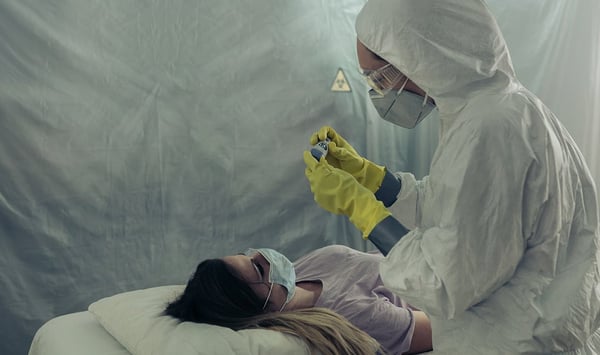
Todd chimed in that the middle of a crisis is not the time to be asking the bigger “what if” questions. “In a disaster, you want to have preplanned your options. You don't want to be trying to figure everything out. A more recent real world example for all of us is COVID. At the beginning of this, in places like New York and New Orleans that were overwhelmed, they thought, 'What happens when we run out of ventilators? What happens when we run out of ICU beds?' That is not the time to be trying to figure out the ethical and moral and health and legal issues associated with triaging.”
As larger national or federal agencies come in to work with smaller local agencies to set up a framework for responding to a large disaster in the region, there can be some difficult dynamics. That’s why it’s important to build relationships with the people you’ll be working with, BEFORE emergencies happen. Having strong relationships already in place is vital to an effective response.
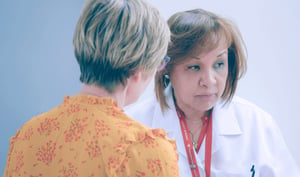 Mike shared his own experience: “One of the things that I've noticed a lot is that sometimes locals bristle at the big folks coming up, right? From the large national organization level, build your relationships with the people you might be helping now, so that it's Todd and Rob and Kris coming in, not XYZ, three-lettered government agency, right? The other thing is to first realize that you're coming in as a backup to a whole bunch of folks who have responded and handled things as best they could with the stuff they already had, who are exhausted and still trying to think about next level, the next issue. So when you come in, first pause to listen, and then ask: ‘How can we help?’ Even if you have stuff that you know will take care of things, pausing and asking that question—how can we be of most help to you—allows them to relax and not go, ‘Oh, these people are here to take me over, and I'm no longer relevant.’ Keep them close and included in the decision making, because at some point in time, the disaster is going to be over, and you're going to go home, and they're still going to be there to recover it. They need some standing in their community, they need to be part of the PR process, they need to be part of who's on cameras, they need to be part of all of that in order for you to manage the disaster well and recover from it while on the other side.”
Mike shared his own experience: “One of the things that I've noticed a lot is that sometimes locals bristle at the big folks coming up, right? From the large national organization level, build your relationships with the people you might be helping now, so that it's Todd and Rob and Kris coming in, not XYZ, three-lettered government agency, right? The other thing is to first realize that you're coming in as a backup to a whole bunch of folks who have responded and handled things as best they could with the stuff they already had, who are exhausted and still trying to think about next level, the next issue. So when you come in, first pause to listen, and then ask: ‘How can we help?’ Even if you have stuff that you know will take care of things, pausing and asking that question—how can we be of most help to you—allows them to relax and not go, ‘Oh, these people are here to take me over, and I'm no longer relevant.’ Keep them close and included in the decision making, because at some point in time, the disaster is going to be over, and you're going to go home, and they're still going to be there to recover it. They need some standing in their community, they need to be part of the PR process, they need to be part of who's on cameras, they need to be part of all of that in order for you to manage the disaster well and recover from it while on the other side.”
Pratik agreed. “There shouldn't be necessarily a battle of ownership. It should be a collaborative effort and a smoother handoff.”
Todd added, “Build those relationships. Even if you are a supervisor-level person who doesn't have control of those things, you have the opportunity to interact with supervisors and managers of your surrounding agencies and build those relationships at the beginning. So at least when they show up on the scene, as Mike said, it's Todd or Kris or Rob or Pratik showing up. It's not some other supervisor I've never talked to before. Literally go have coffee with somebody. Go meet with them, go find out who you know who knows them. It's the local LinkedIn, right? We all go to work to do a good job. We don't go to work to suck. So take the opportunity to go talk with like-minded people.”

Mike’s recommendation for larger planning events? Provide food.
“When we were planning and dealing with riots associated with the Mehserle trial and related to the Oscar Grant killing a few years ago in Oakland, I made the investment in pizza. I basically bought two pizzerias out of all of their food. I fed 1,800 police officers and 200 paramedics over the course of a day and a half's worth of planning, and set it up so that everybody had to come and interact during that process. The FBI was over here, and they were over here talking to the Oakland Police folks. It is amazing the level of connection and planning and cooperation that can be developed when you share a meal with anybody.”
“Absolutely,” Rob chimed in. “Pizza's always the right answer.”
As a final encouragement to readers/viewers/listeners, each panelist closed out the webinar with an encouragement to connect—with them or with others—to share experience, find resources, and learn from one another.
 “We live in a different world today than we lived in even at the beginning of this year," said Kris. "And yet here we are gathering around, breaking bread right now, sharing best practices, and we're not talking about all the features of Suntech and all the intricacies of Pulsara, we're not going through any of the backend surveillance QI enhancements of First Watch. What we're doing is we're paying it forward and sharing an opportunity to humanize people who want to share and connect and learn from each other. It's a smaller world when you have video conferencing and when you have podcasts and webinars and blogs and articles, and you are wanting to pay it forward. I believe, and I'm speaking for the rest of the group here, that if anybody reaches out to any one of us because something connected with them, via LinkedIn or email or text or phone call, we will answer those questions, or more importantly, we will get you in front of the person who can answer those questions, and help make this community even smaller.”
“We live in a different world today than we lived in even at the beginning of this year," said Kris. "And yet here we are gathering around, breaking bread right now, sharing best practices, and we're not talking about all the features of Suntech and all the intricacies of Pulsara, we're not going through any of the backend surveillance QI enhancements of First Watch. What we're doing is we're paying it forward and sharing an opportunity to humanize people who want to share and connect and learn from each other. It's a smaller world when you have video conferencing and when you have podcasts and webinars and blogs and articles, and you are wanting to pay it forward. I believe, and I'm speaking for the rest of the group here, that if anybody reaches out to any one of us because something connected with them, via LinkedIn or email or text or phone call, we will answer those questions, or more importantly, we will get you in front of the person who can answer those questions, and help make this community even smaller.”
“Paying it forward is important," agreed Todd. "I think that the one thing that we all also share is we're all always learning. If you approach it less like, 'I'm going to share my best practices' and a little more about, 'I have a lot to learn, and by communicating and talking about it, I can learn a lot, and I'll also be able to share,' I find that that is the best way of sharing.”
“I would just say, stay curious about all this stuff," said Mike. "There's a lot of ways to learn, and stay generous. As you learn things, share them with other folks. That's the way we collectively build our knowledge and our capacity base so that we can do better in the next disaster.”
Rob agreed. “Emergency response is truly a bipartisan issue. This is an opportunity for collaboration and coming together rather than having division.”
“Don't be afraid to reach out to us," said Pratik. "The knowledge is free. We're here to help you, we're here to share our best practices, and we're here to operate on a common charter, which is protecting against internal threats and ultimately saving lives.”
Want to learn more about the keys to successful emergency preparedness? Check out The 5 Most Important Factors of Emergency Preparedness.
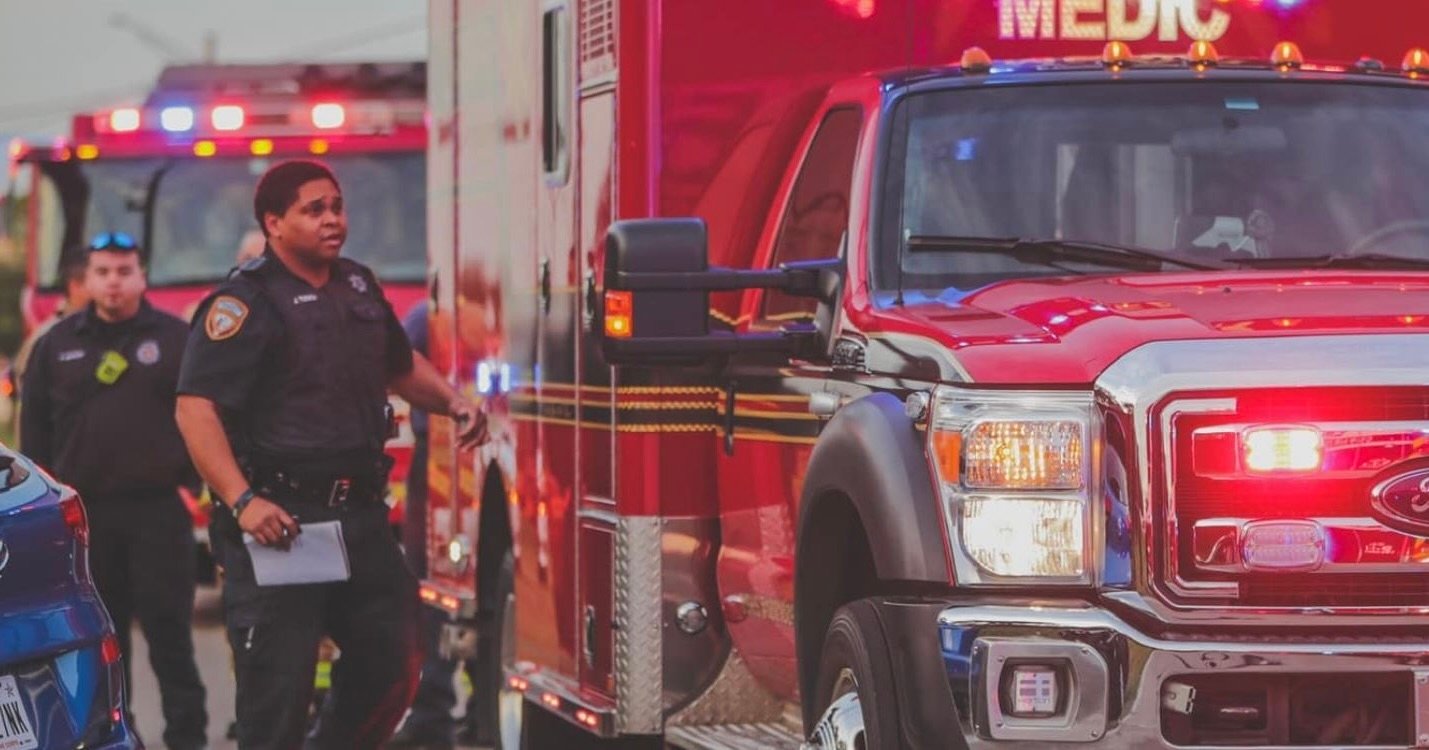
Texas EMS Agency Slashes Hospital Offload Times For Low-Acuity Patients Down from 45 Minutes to 10.2 Minutes with Innovative Door-to-Lobby Protocol ...
![Burnout in EMS: Recognize it, Fight it, Overcome it [2025 EMS Trend Survey]](https://www.pulsara.com/hubfs/stressed-female-paramedic-1200x630.jpg)
Editor's Note: In July 2025, EMS1 and Fitch & Associates released their annual EMS trend survey, What Paramedics Want, proudly sponsored by Pulsara....
![The EMS Workforce is Sounding the Alarm [2025 EMS Trend Survey]](https://www.pulsara.com/hubfs/tired-medic-sitting-in-amb-ppe@1200x630.jpg)
Editor's Note: In July 2025, EMS1 and Fitch & Associates released their annual EMS trend survey, What Paramedics Want, proudly sponsored by Pulsara....